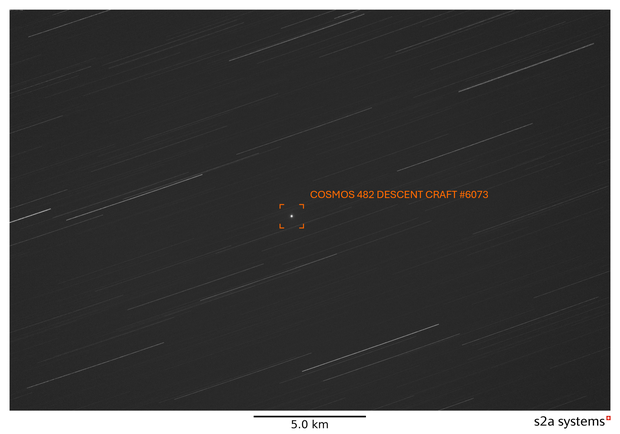
Image Source:
Source: cbsnews.com
Image content: The image depicts a celestial body, specifically the COSMOS 482 DESCENT CRAFT #6073, as indicated by the orange text. The main subject is a small white dot surrounded by an orange square, situated within a black background featuring numerous gray streaks. These streaks are likely stars or other celestial objects captured in the image.
Summary
The Kosmos 482 spacecraft, launched in 1972 to explore Venus, likely reentered Earth's atmosphere after 53 years in orbit due to a rocket malfunction. The European Space Agency and EU Space Surveillance confirmed the uncontrolled reentry, but the exact location and amount of surviving debris are unknown.
Key Points
- Kosmos 482 broke into four pieces after failing to leave Earth's orbit, with one fragment believed to be the lander
- The titanium-encased lander, estimated to be 3 feet across and over 1,000 pounds, may have survived reentry due to its heat protection
- Predictions suggest the spacecraft reentered the atmosphere over southern England, but the exact location and extent of surviving debris are still being investigated